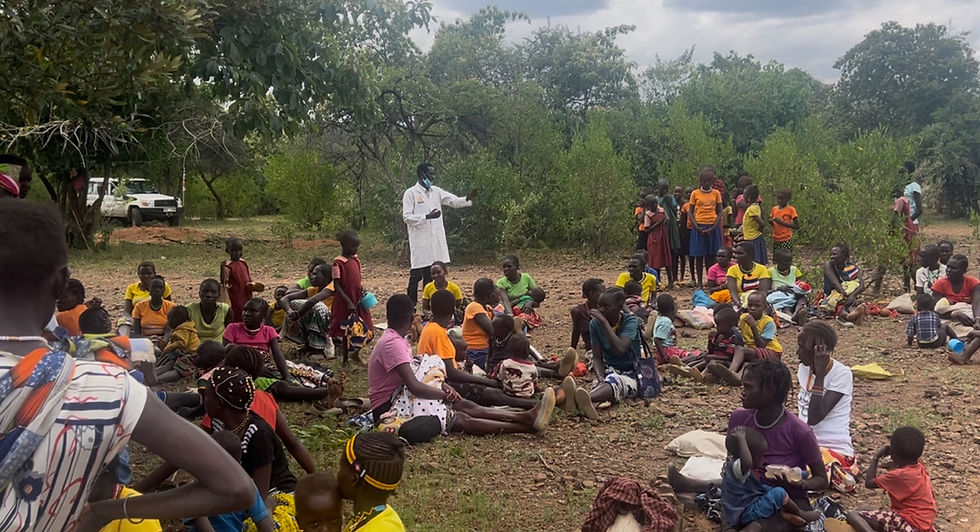The Rhythm of a People
- Alex Chang
- Dec 14, 2023
- 4 min read
October & December 2023
I was raised by Ravel, Debussy, and Chopin. Or perhaps from the Classical Era, Mozart, Beethoven, and Haydn. Echoing through my childhood home was my sister on the piano as she practiced for hours on end in anticipation of her evaluations. As my developing mind grew, music became more than just soundwaves. It became colors, a dialogue between composer and musician, a way of connection. Pretty soon, music shaped my thought process as I saw it weave itself into every fabric of my life. To me, everything had a rhythm. People have distinct tempos, and interaction, whether talking, writing, hugging, or smiling, created new, profound, complex rhythms. To me, this was the beauty of human interaction; its passionate love, its harsh conflict, its bittersweet happiness, and its rainy seasons all served to compose a melody so perfectly imperfect, and so unique to human nature. I still have this perspective on life, and despite maturing through adolescence, perhaps I carry aspects of my childhood self as I continue to see cultures as rhythms.
In all its beauty, with maturity came reality and anxiety.
In late October, with our refrigerated backpacks finally arriving in Kenya, we embarked on a first-hand field test, examining their capabilities by partnering with the Kenya Red Cross during their immunization outreach campaigns. Spanning villages as far as Kulol, where one-way travel from Chemolingot is four hours of unmatched rough roads, these backpacks would have to maintain laboratory-grade refrigeration for vaccine transports over a period of almost eleven hours. Of course, being the first time these backpacks would be implemented under the beating Kenyan sun, I had my share of anxieties on its performance. There was so much anticipation built behind the potential of these backpacks that in my mind, everything culminated on this trip. However, greater was the plaguing fear that I would not be able to connect with the people that I sought to serve. Although I’ve had many conversations with the healthcare workers partnering with us in the program, this would be the first time I would be introducing myself to Pokot villages. What if our intrinsic rhythms were out of sync? What if we thought in different time signatures, or saw life in different melodies? My greatest fear was that due to my status as an outsider, it would be much harder to develop trust between myself and the community, and our program would be held in criticism and suspicion.
Upon our arrival in Chesawach village, our outreach began with a prayer and a health education session. Standing next to our Kenya Red Cross outreach staff, I realized that many eyes were fixated on me. Most probably, curiosity was the root, yet recalling my past trainings on patient-provider interactions, I also knew that there was an unsaid power dynamic between myself, who was standing, and the villagers, who were sitting. Addressing this inequality, I sat among the children during the health talk, aiming to break any psychophysical barriers between myself and the villagers.
Interestingly, many of the children were curious about the medical bag I always carried around, containing various medications, first-aid supplies, a pulse oximeter, and my stethoscope. After the health talk, I took out my stethoscope and showed some children how to listen to each other’s heartbeats and lung sounds, and others how the pulse oximeter reads their pulses. With the help of a fellow Kenya Red Cross health worker, we were able to explain to the children what they were observing in the Pokot language. Where there used to be distance, a crowd of curious children quickly grew around us, and what used to be stares quickly became eager eyes. Pretty soon, children began to teach other children where the heart was in their chests and how to hear its beating. Teeth flashed and smiles spread every time a child found the badung-badung of another’s heart. Our outreach ended with tired smiles and a long trip back to Chemolingot. Of course, the success of the backpacks in maintaining laboratory-grade refrigeration was a tremendous accomplishment. But more importantly, we had found the melodies of each other’s hearts, and our common song was a fascination of medicine.
Now reflecting on this time in December, its safe to say that learning the rhythm of the Pokot was worth it. We eventually visited Chesawach village once again just last week, and to my surprise, many of the children remembered me. During this outreach, our primary goal was to pilot the collection blood samples of patients with suspected Kala-azar using our backpacks for further analysis at Chemolingot Sub-County Hospital. Both mothers and children approached our makeshift clinic without reservations and allowed our team to take blood samples and perform clinical examinations for abdominal/splenic dissentions. And while our hearts beat in different rhythms, we composed a melody together through medicine, bridging gaps in both healthcare access and culture.

Children listen to each other's heartbeats through Alex's stethoscope during the first outreach to Chesawach

Collecting blood samples from a suspected Kala-azar patient during the second outreach to Chesawach




Comments